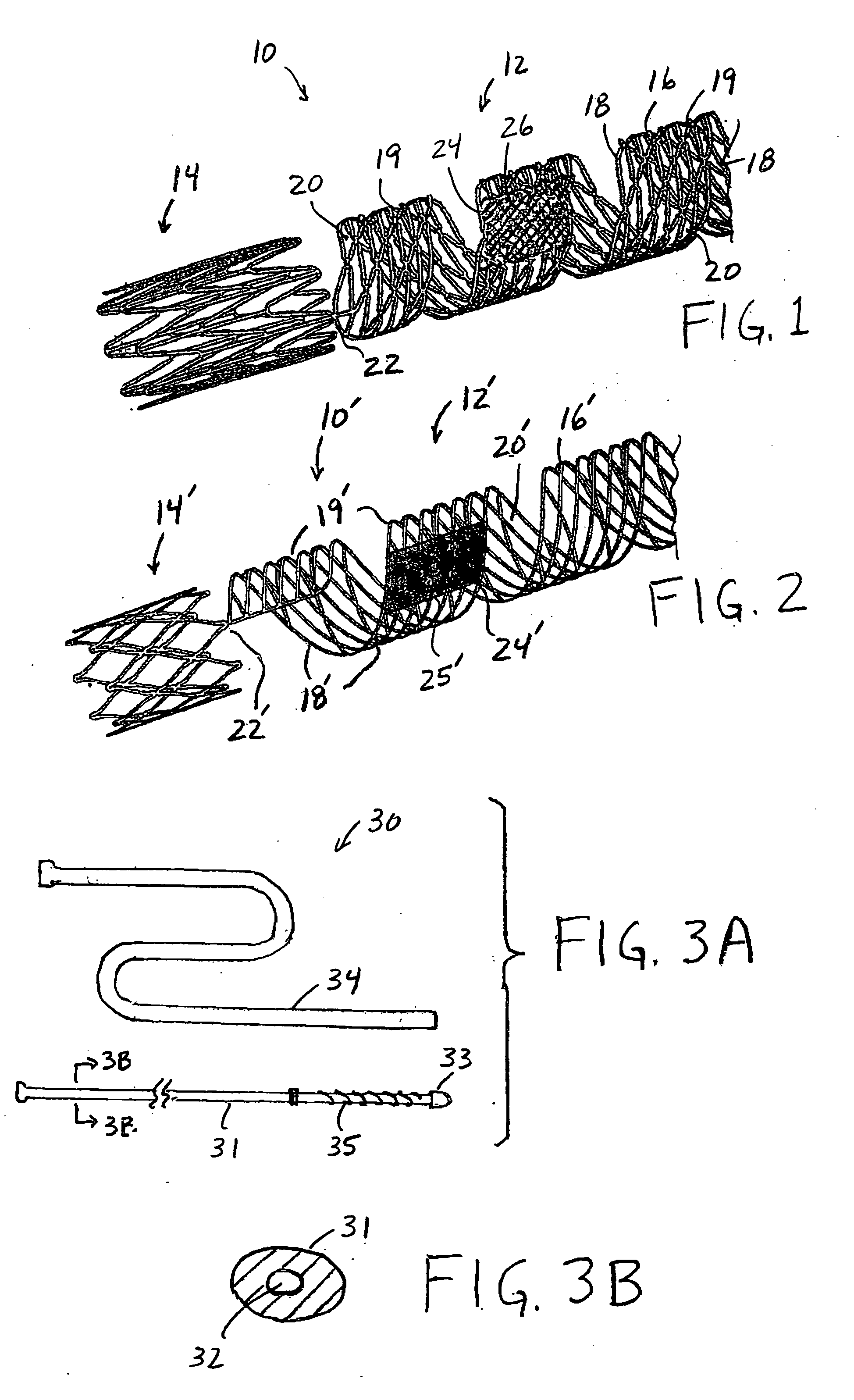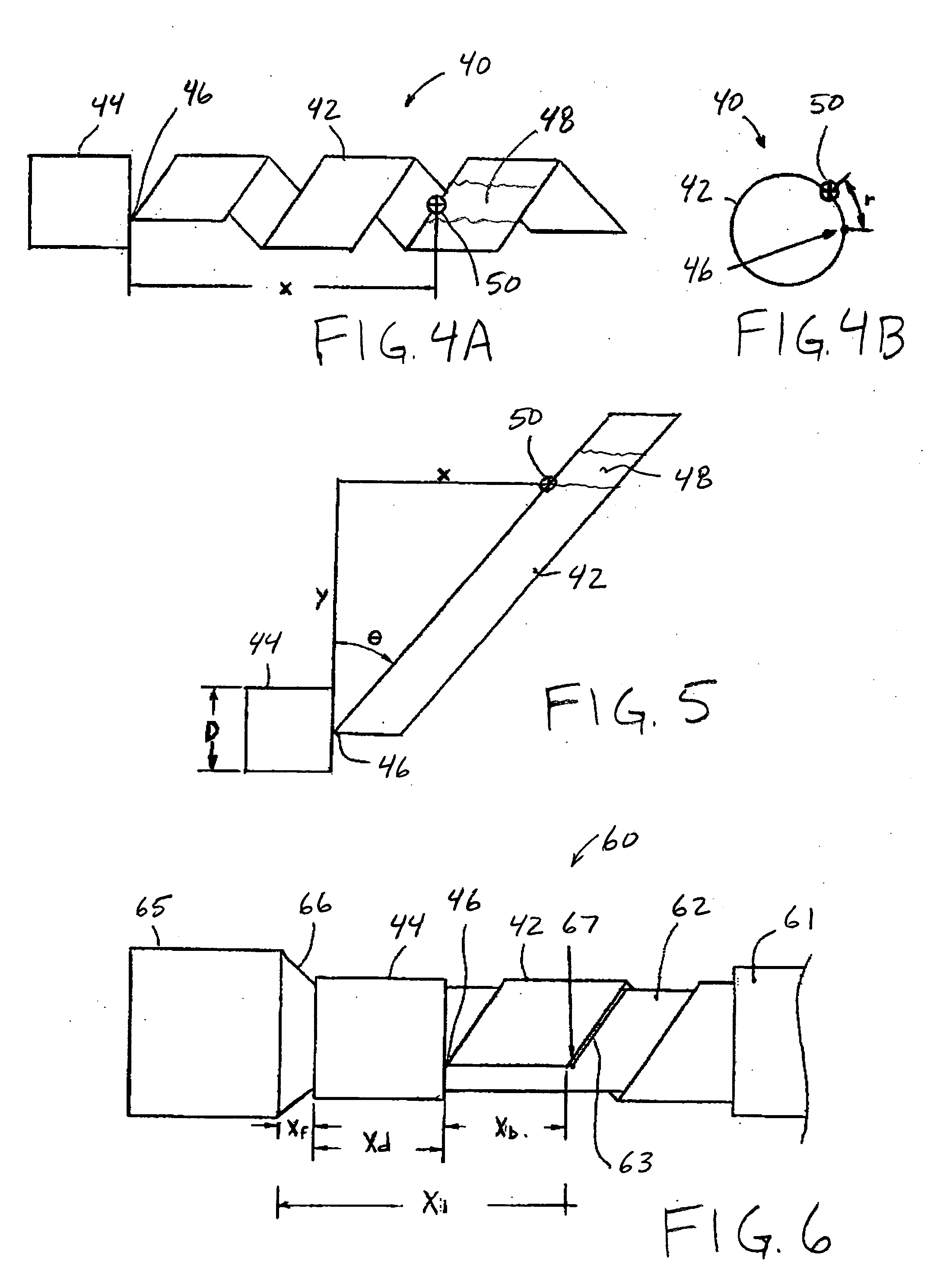Prosthesis, delivery system and method for neurovascular aneurysm repair
a neurovascular aneurysm and delivery system technology, applied in the field of prosthesis, can solve the problems of large delivery profile, unsuitable stents for use in smaller vessels, and uneven placement of prostheses, and achieve the effect of facilitating proper angular orientation of vascular prostheses, reducing the risk of stent damage, and small delivery profil
- Summary
- Abstract
- Description
- Claims
- Application Information
AI Technical Summary
Benefits of technology
Problems solved by technology
Method used
Image
Examples
Embodiment Construction
[0031] The present invention is directed to prostheses, delivery systems and methods for treating aneurysms located within narrow and tortuous vessels, such as in the cerebral vasculature. In accordance with the principles of the present invention, the prosthesis includes a feature disposed on a localized region of the prosthesis to retard or exclude blood flow into the sac of an aneurysm. The prosthesis may be used alone or in conjunction with embolism coils, such as are known in the art.
[0032] In accordance with the principles of the present invention, the aneurysm exclusion feature comprises a locally-higher density of the strut arrangement of the prosthesis or a portion of graft material disposed only on a discrete portion of the length or circumference of the prosthesis. Due to the localized nature of the feature, the prosthesis of the present invention is expected to provide a smaller delivery profile, and greater flexibility and trackability than previously-known devices.
[0...
PUM
 Login to View More
Login to View More Abstract
Description
Claims
Application Information
 Login to View More
Login to View More - R&D
- Intellectual Property
- Life Sciences
- Materials
- Tech Scout
- Unparalleled Data Quality
- Higher Quality Content
- 60% Fewer Hallucinations
Browse by: Latest US Patents, China's latest patents, Technical Efficacy Thesaurus, Application Domain, Technology Topic, Popular Technical Reports.
© 2025 PatSnap. All rights reserved.Legal|Privacy policy|Modern Slavery Act Transparency Statement|Sitemap|About US| Contact US: help@patsnap.com



